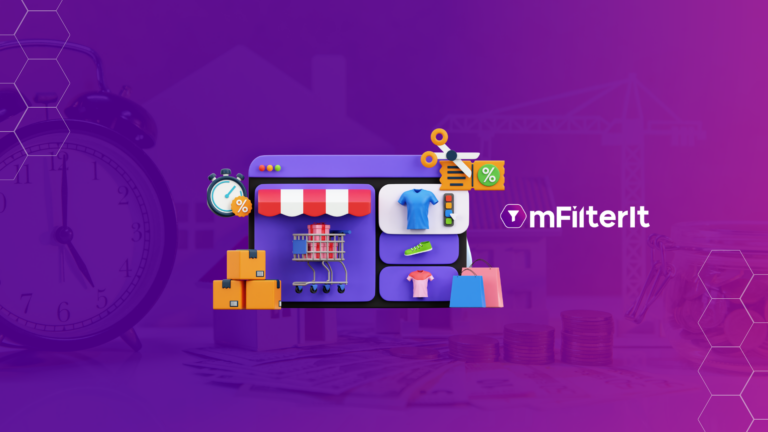The astounding rise in the eCommerce segment in Beauty Personal Care (BPC) segment could be credited to the changing lifestyle of the young Indian demographic. The products are not just exclusive segments but daily need products.
The Indian beauty and personal care market stands 8th among the top countries in the world with an estimated value of USD 15 billion and growing at a steady rate of approximately 10%. (Based on Euromonitor International Study). The Market is all set to get double by 2030 with skincare products and cosmetics driving growth.
The penetration outside metros into Tier-1 and Tier-2 cities has been a major advantage to the Indian BPC market. This provides the Indian BPC e-commerce market with significant headroom to grow and scale up.
Table of Contents
ToggleLucrative Market with growth opportunities
The online BPC market in India expanded significantly in the last few years driven by a steep increase in e-commerce adoption. Across the digital shopping platforms, the beauty personal care segment continues to show accelerated growth post-pandemic. The consistent year-on-year growth over the last 2 years has been the hallmark of the segment. As compared to other emerging segments beauty personal care reported maximum growth with a 143% rise in order volume compared to 2021 along with a rapid rise in order value as well up to 132% in FY22.
The emergence of many digital-first brands in the last 2 years has helped the beauty personal Care segment outperform with robust growth. The rising number of “House of Brands” and the flurry of investors hogging on segment potential has been the key factor in its growth. Even the traditional players are leveraging the BPC eCommerce high.

eCommerce segment-wise order volume – FY 2021 vs FY 2022 | Source: Unicommerce Report 2022
Technology adoption boosts the BPC e-commerce Segment
The adoption of technology has been another factor that led to the rapid rise of the beauty personal Care segment. The Brands switch to a more personalized customer-centric approach to optimize customer journey at every touch point. The move to improve supply chain and logistics with competitive intelligence has led to rapid strides with technology. Solutions like mScanit ensure that beauty and personal care brands optimize their discoverability, pricing analysis, and track availability across multiple touchpoints. The technology is not just limited to purchase experience monitoring sales and reconciliation but also makes the customer feel valued with a seamless post-purchase experience.
Build on Brand Trust and Loyalty
In changing eCommerce landscape brands across segments need to build a strong presence online. The goal is to connect with the customer. In the beauty personal care segment customers like to trust the brand they use and seek more of what their trusted brand has to offer building a bond. This ensures conducive customer retention. The Brands need to ensure an elevated shopping experience on their website and in the eCommerce marketplace to develop a connection with consumers.
Gen Z and millennials stay quite aware of the options they have and offers available on various channels. This makes having digital commerce of paramount importance. Competitive analytics give brands an added edge over the cut-throat competition.
The faith of customers reflects in year-on-year stronger growth on the top brand’s website purchases as compared to marketplaces. The stronger growth above 80% in FY22 on the brand websites is indicative of their potential. Brand Trust and loyalty across platforms leads to astonishing customer retention and positive feedback leads to potential new consumers. The competitive analysis of customer sentiment is key to elevating brand loyalty.
eCommerce Watershed Moment Post-Pandemic High Demand in Tier-2 and Tier-3 Cities
The hinterland of India is steadily getting attracted to convenient shopping. Beauty and personal care products have been the top pick among Tier-2 and Tier-3 new eCommerce shoppers. The remarkable progress and e-commerce penetration have led the shoppers from these cities to make up the major chunk of market share across e-commerce shopping avenues. Post-pandemic the year-on-year growth has been remarkable in Tier- 2 and Tier- 3 cities while the growth rate and slightly lost pace.

E-commerce penetration across Indian cities in 2022 | Source: Unicommerce Report
In the post-pandemic era, faster delivery and optimized shopping experience have been the driving factors for eCommerce growth. Internet penetration and rapid growth in Tier-2 and Tier-3 cities are the driving forces leading to this new demographic towards the e-commerce marketplaces.
Final thoughts – Target the right consumer
The beauty personal Care industry has a major challenge in terms of reaching out to the right customer. High demand in tier 2 and tier 3 cities has opened the door to a massive range of new customers with varied shopping potential and budget brackets. Brands need to tap into these new geographies with ecommerce competitive analysis paving ways to edge ahead. The end-to-end digital commerce intelligence at every touch point can enhance customer experience and boost sales across the digital ecosystem. mScanIt, a digital commerce intelligence solution provides actionable insights and analytics across multiple KPIs for the brand. Tools like content recommendation help brands go beyond analytics with auto-content generation for product display pages and optimize the content across platforms.
In the last few years, new business models and multiple segments have emerged across the eCommerce ecosystem. Brands should keep track of new opportunities opening to target consumers across the digital commerce landscape.
Get in touch with our experts for deeper insights. Reach out to learn more.




